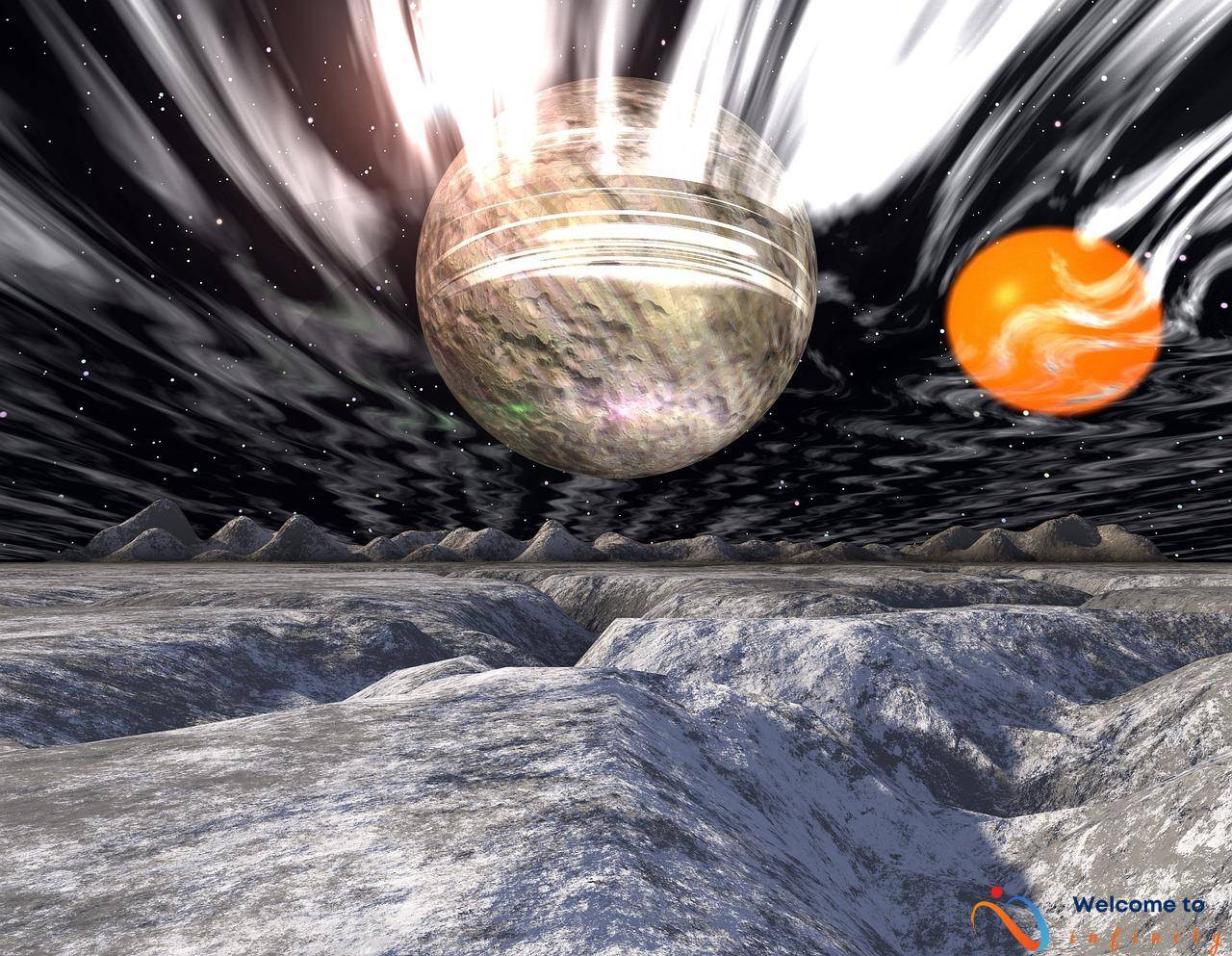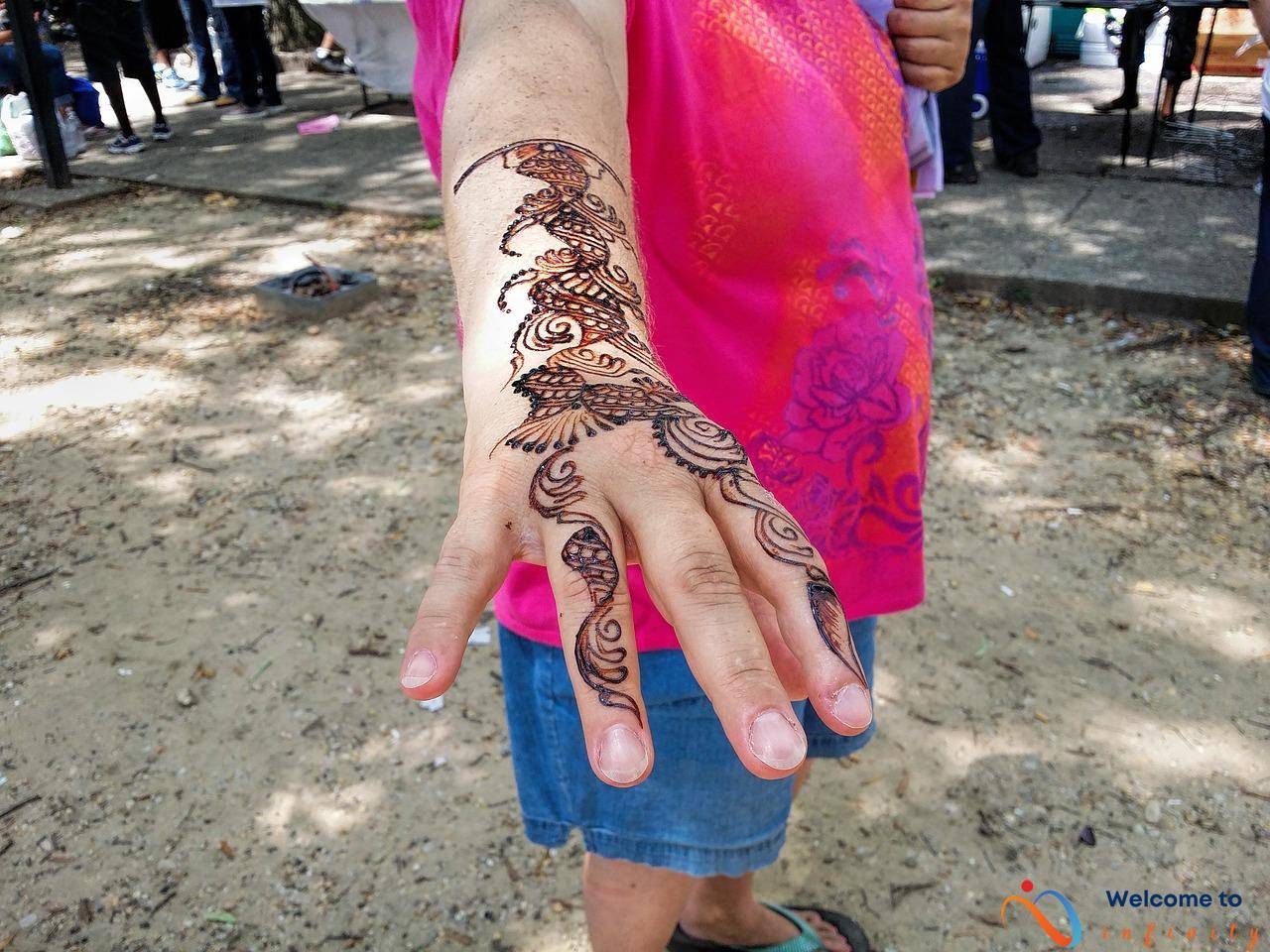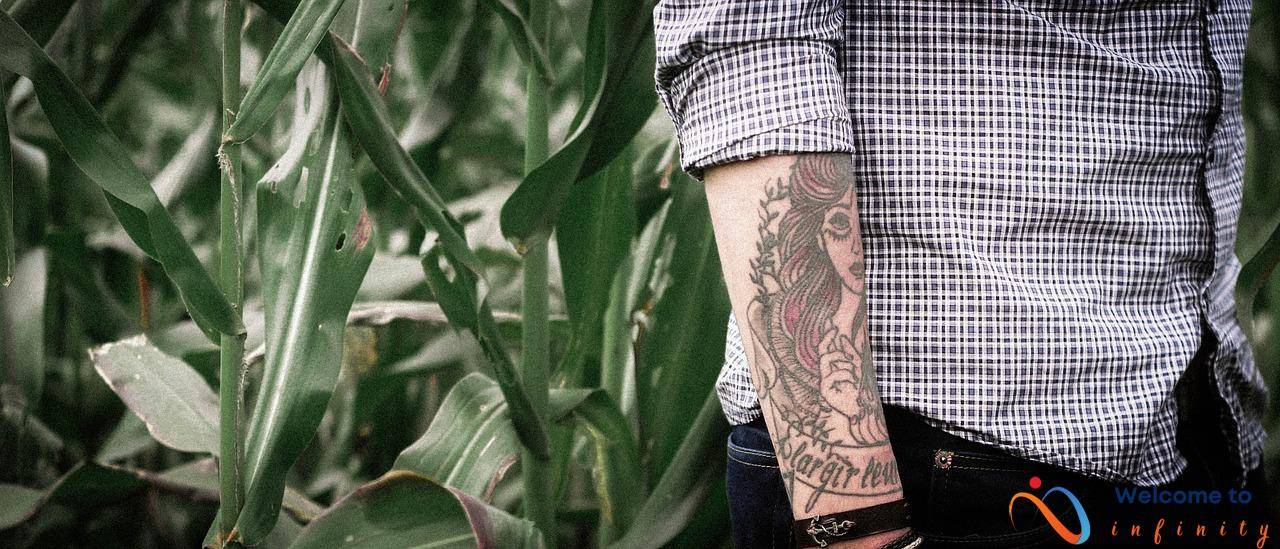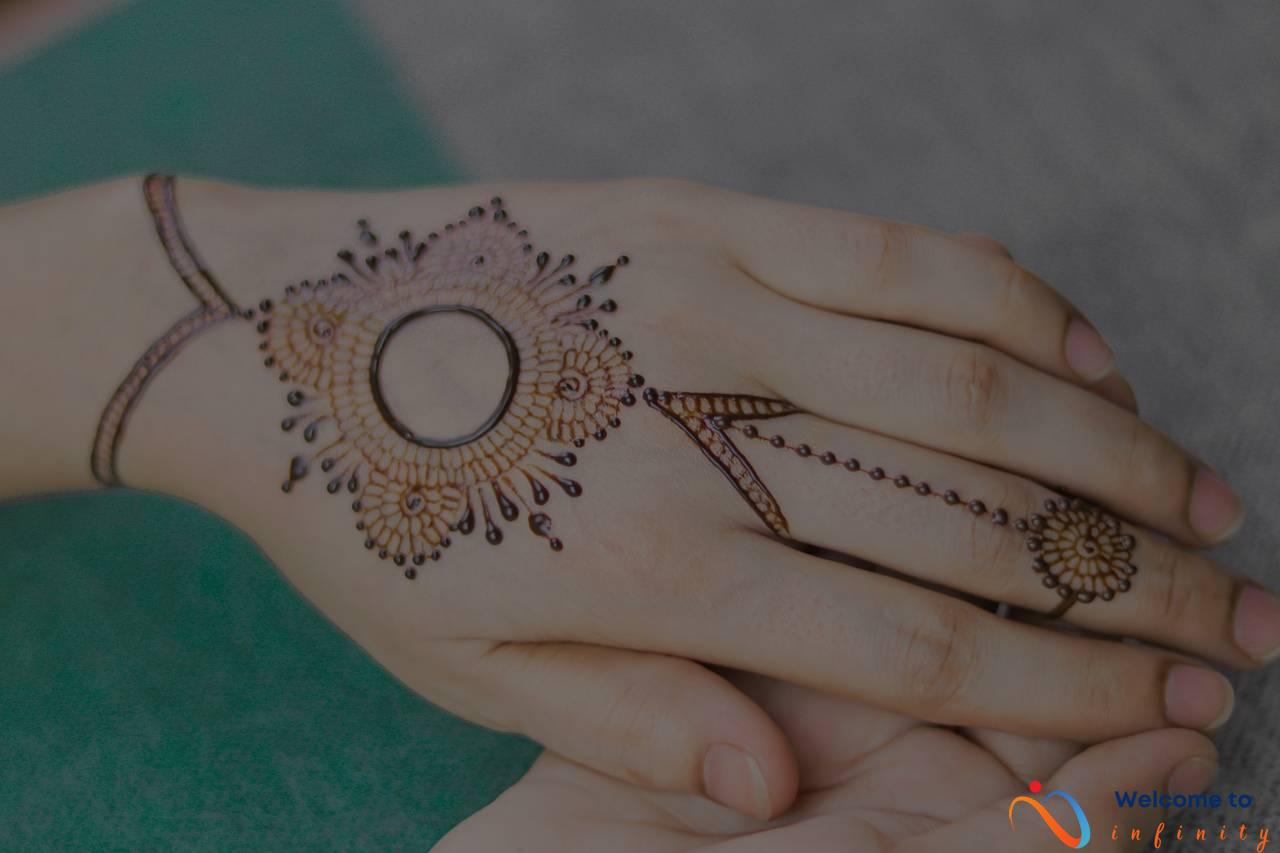Geometric tattoos have become increasingly popular in recent years, and it's easy to see why. These tattoos boast incredible symmetry, precision, and often incorporate complex designs that are visually stunning. One of the main reasons for their popularity is the versatility of geometric shapes; they can be customized to suit any individual's personal style or taste.
To achieve such precise and symmetrical designs, artists use a range of techniques such as dotwork, linework, and shading. Dotwork, for example, involves using tiny dots to create a texture and shading effect, while linework involves creating straight, clean lines. Shading techniques such as stippling, crosshatching, and grayscale are also frequently used to add depth and dimension to the tattoo.
Some of the most common geometric shapes seen in tattoos include mandalas, triangles, and sacred geometry. These shapes often have deep symbolic meaning and are chosen by individuals for their significance. Mandalas, for example, are known for promoting relaxation and meditation, while triangles can represent strength, balance, and harmony.
When it comes to caring for a geometric tattoo, it's important to take proper precautions to ensure its longevity. This includes keeping the tattoo clean, moisturized, and well-protected from the sun. With the right care and maintenance, a well-executed geometric tattoo can remain crisp and sharp for years to come.
Overall, the precision and symmetry of geometric tattoos have made them a favorite among many tattoo enthusiasts. With their endless possibilities for customization and deep symbolic meanings, it's no wonder they continue to grow in popularity.
History of Geometric Tattoos
Geometric tattoos have been around for centuries and have evolved over time to become a popular modern tattoo style. In ancient times, geometric tattoos held significant cultural and spiritual meanings. For example, the Polynesians used tattooing as a way to signify rank and identity. The Maori people used tribal tattoos as a way to communicate their family history and status within the tribe.In the Western world, geometric tattoos gained popularity in the 20th century. Tattoo artists such as Leo Zulueta, Guy Aitchison, and Paul Booth popularized the geometric style and introduced new techniques that made it possible to create more intricate and precise designs.Modern geometric tattoos draw inspiration from various cultures and art styles. For example, sacred geometry, which involves the use of geometric shapes and patterns to represent spiritual beliefs, has become a popular theme in geometric tattoos.Despite the evolution of geometric tattooing over time, the main features that define it remain the same: precision and symmetry. Tattoo artists strive to uphold these essential qualities by using various techniques and tools to create perfect designs that stand the test of time.
Design Techniques
Geometric tattoos are all about precision and symmetry, which is why they require a specific set of design techniques to achieve that perfect look. The following are some of the design techniques commonly used by artists to create captivating geometric tattoos.
Dotwork is a popular technique used in geometric tattoos that involves creating designs using small dots. This technique creates a unique texture and shading effect and is achieved using either a single needle or a group of needles. By varying the distance between the dots and the density of the dots, artists can create different tones and textures to enhance the overall design.
| Advantages | Disadvantages |
|---|---|
| -Creates unique texture | -Can be time-consuming |
| -Allows for more subtle shading | -Requires precise dot placement |
| -Adds depth and dimension to designs | -Not suitable for large areas |
Linework is another technique that involves creating designs using lines. The key to achieving precise and symmetrical linework is to use a steady hand and a single motion when creating the line. Apart from the traditional black lines, artists also use white ink to create negative space and heighten the contrast in the design.
- Straight line technique
- Whip shading technique
- Gray shading technique
Shading is a crucial element in geometric tattoos that adds depth, dimension, and visual interest to the design. Different shading techniques like stippling, crosshatching, and grayscale are used by artists to achieve the perfect effect. By varying the density and length of the lines, artists can create intricate patterns and subtle tonal differences to enhance the design.
By using a combination of these design techniques, artists can create precise and symmetrical geometric tattoos that are not only visually stunning but also hold deep meaning and significance to their wearers.
Dotwork
Dotwork is a technique used in creating geometric tattoos that involves the use of tiny dots to create patterns or shading effects. It involves creating a design by connecting thousands of dots in a specific pattern, which requires a lot of time and patience. The result is a tattoo with a unique texture and shading effect that stands out from other tattoo styles.
The tools used for dotwork tattoos include fine-point needles and ink, which are used to create precise dots on the skin. Artists may also use specialized machines that allow them to create dots of varying sizes and densities, allowing for more intricate designs.
One of the benefits of dotwork tattoos is its ability to create highly detailed designs with minimal fading or blurring over time. Because the dots are tightly packed together, the design remains crisp and sharp for many years. Additionally, because the dots are smaller and more closely spaced, they can be used to create highly intricate designs that are difficult to achieve with other forms of shading or linework.
Overall, dotwork is a useful and versatile technique that can be used to create a unique texture and shading effect in geometric tattoos. The time, precision, and patience required to create these tattoos make them highly sought after by tattoo enthusiasts who appreciate the artistry and attention to detail that goes into each design.
Linework
Linework is an essential technique used by tattoo artists to create precise and symmetrical designs in geometric tattoos. It involves creating straight lines using a tattoo machine and needle, with the aim of achieving flawless designs. The linework technique is typically used to outline the shapes and patterns in a geometric tattoo, and the type of line used can greatly affect the overall look and feel of the design.
There are different styles of linework used in geometric tattoos, including thick, thin, and broken lines. Thick lines are typically used to create bolder designs, while thinner lines are suited for more delicate designs. Broken lines are ideal for creating textured designs and adding depth to a tattoo.
To achieve straight lines, tattoo artists must have a steady hand and a firm grasp on the tattoo machine. They should also use a proper grip and apply consistent pressure to the needle. Many artists also use a stencil or transfer paper to ensure the lines are symmetrical and accurate.
Aside from the standard linework technique, artists can also experiment with different styles, such as hatching and cross-hatching. This involves creating lines that intersect or overlap each other, resulting in a mesh-like effect. Another popular style is negative space linework, where areas of the design are left un-inked, creating a striking contrast in the final result.
Overall, linework is a crucial part of creating precise and bold geometric tattoos. With the proper technique and an artistic touch, tattoo artists can create unique and eye-catching designs that truly stand out.
Shading
Geometric tattoos are known for their precise and symmetrical designs, and shading plays an essential role in enhancing the overall look of the tattoo. There are various shading techniques used by artists, including stippling, crosshatching, and grayscale, to give the design depth and dimension.
Stippling involves using a series of dots to create texture and shading in the tattoo. The closer the dots are placed, the darker the shade appears. By varying the size and frequency of the dots, artists can create different textures and effects within the design.
Crosshatching is another shading technique commonly used in geometric tattoos. It involves drawing a series of parallel lines and crossing them over with another set of lines at a different angle. This technique creates a pattern of intersecting lines that gives depth and volume to the tattoo design.
Grayscale shading involves creating different shades of gray to give the tattoo a three-dimensional effect. Artists achieve this by using varying levels of black ink mixed with water to create lighter shades or pure black ink for darker areas.
In addition to these shading techniques, some artists also incorporate color into their geometric tattoo designs, using vibrant hues to emphasize certain aspects of the design.
Shading is an essential aspect of geometric tattoos, and skilled artists use these techniques to create unique and visually striking designs that stand the test of time. Understanding the different shading techniques and their effects can help you choose the right artist and ensure your geometric tattoo looks its best.
Symbolism in Geometric Tattoos
Geometric tattoos often incorporate symbolic shapes and patterns that hold special meanings to the wearer. The mandala, for instance, is a circular design that represents unity and completeness. It is often used as a tool for meditation and is found in various cultures throughout the world. Triangles, on the other hand, are a popular geometric shape that holds different meanings depending on their orientation. An upward-facing triangle represents masculinity while a downward-facing triangle represents femininity. Together, they can represent balance or the union of the two energies.
Sacred geometry is another common theme in geometric tattoos, and it refers to the underlying patterns and proportions found in nature. These patterns are believed to hold mystical properties and have been used in artwork and architecture for centuries. One of the most well-known shapes in sacred geometry is the Flower of Life, a complex geometric pattern that is said to represent the fundamental forms of space and time.
Other popular symbols in geometric tattoos include the compass rose, which represents guidance and direction, and the hexagon, which is often interpreted as a symbol of balance and harmony. Some people also choose to incorporate numerology into their tattoos, using patterns based on sacred numbers like 3, 6, and 9.
Ultimately, the symbolism in a geometric tattoo is deeply personal and meaningful to the wearer. By choosing specific shapes and patterns, they can express their values, beliefs, and life experiences in a unique and visually striking way.
Care and Maintenance
After getting a geometric tattoo, it's crucial to take care of it to ensure it heals properly and looks its best for years to come. Here are some tips for caring and maintaining your geometric tattoo:
- Follow your tattoo artist's aftercare instructions: Every artist has their unique aftercare recommendations, which typically involve washing the tattoo regularly and keeping it moisturized.
- Avoid exposing your tattoo to the sun: Sun exposure can fade the ink, so it's best to keep your tattoo covered or wear sunscreen.
- Moisturize regularly: Keeping your tattoo moisturized can help prevent it from drying out and cracking, which can lead to scarring.
- Avoid scratching or picking at your tattoo: It's essential to let your tattoo heal naturally and avoid scratching or picking at the scabs. Doing so can cause the ink to fade or come out and lead to infection.
- Avoid swimming for the first few weeks: Submerging your tattoo in water can introduce bacteria and cause an infection. So, it's best to avoid swimming, soaking in a bathtub, or taking long showers for the first few weeks after getting a tattoo.
In addition to these tips, it's essential to check in on your tattoo occasionally and ensure it looks good. If you notice any signs of infection, such as swelling, redness, or pus, consult your doctor immediately. Also, follow-up with your tattoo artist if you notice any fading or if the design needs a touch-up. Proper care and maintenance of your geometric tattoo can ensure it looks gorgeous for years to come.










